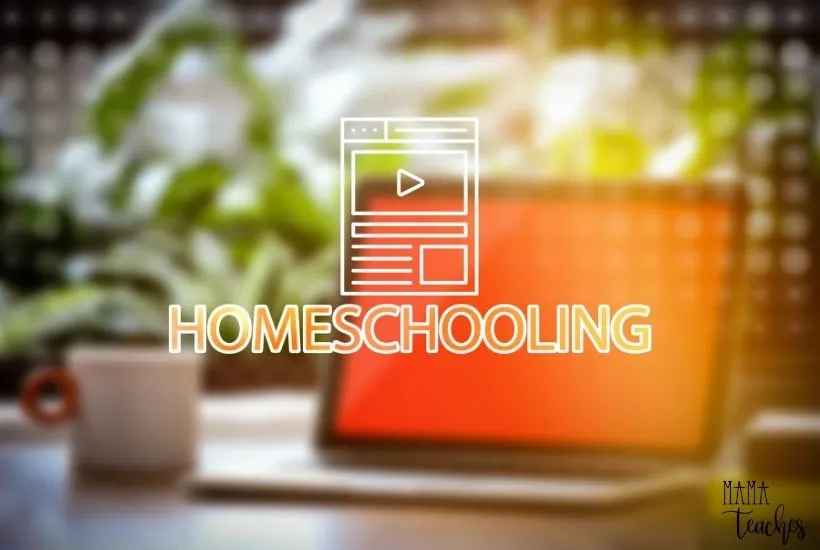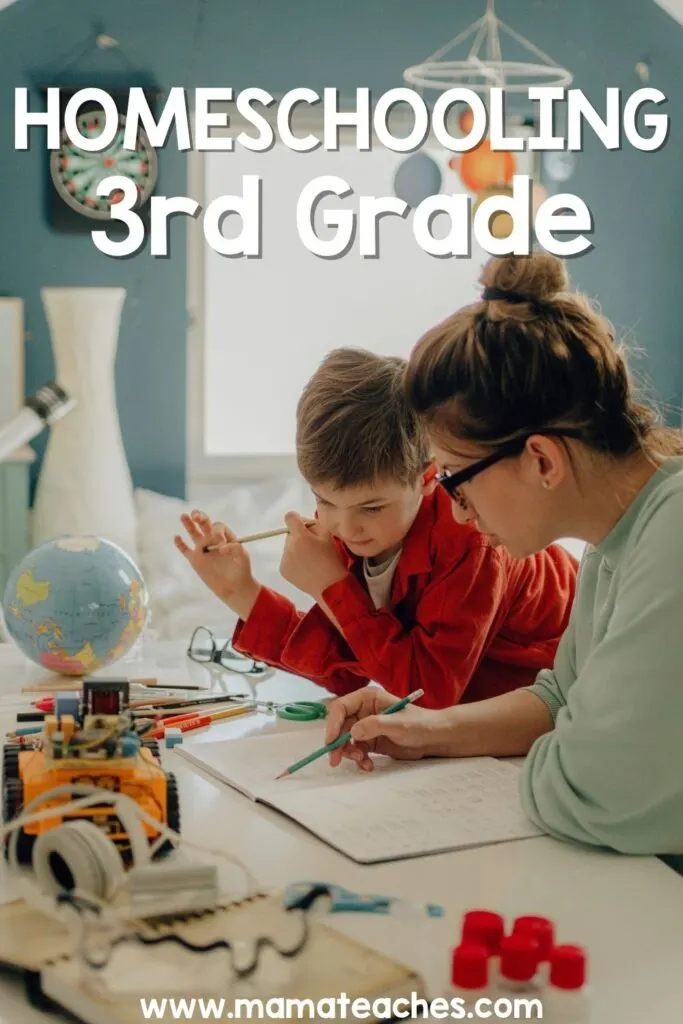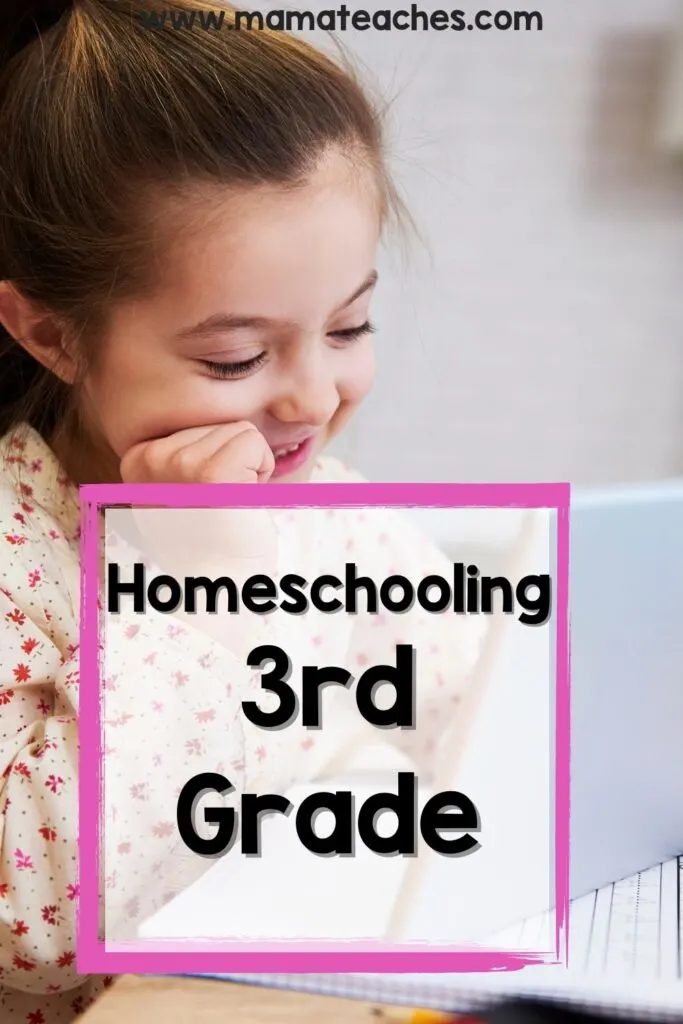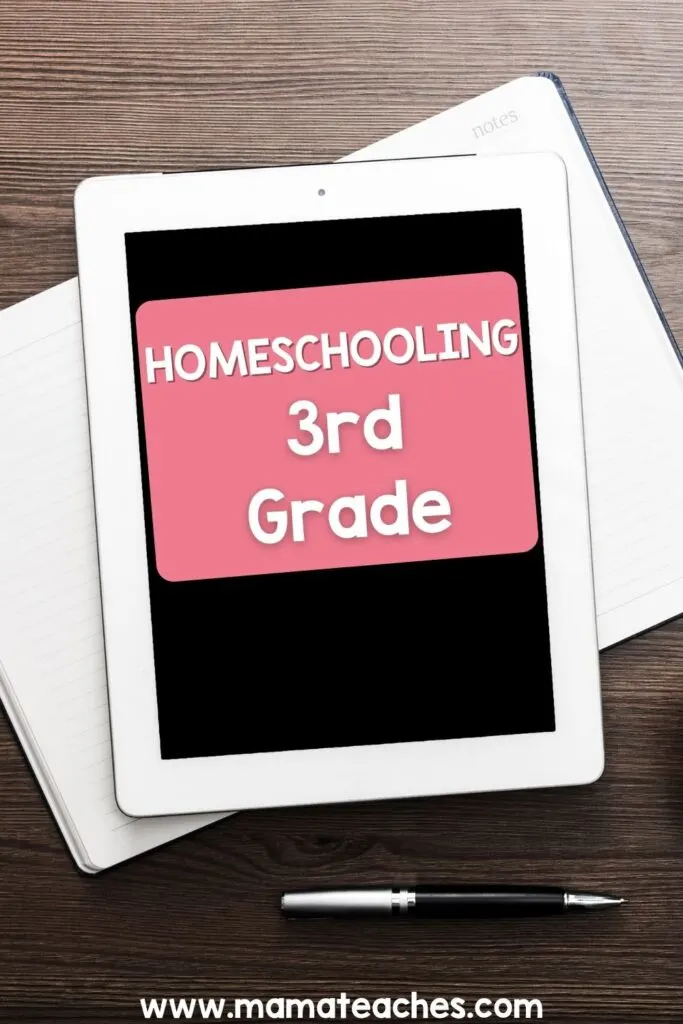You’re smack in the middle of the elementary grades, but how do you homeschool a third grader?
Here’s everything you need to know about homeschooling 3rd grade – from learning objectives to curricula to schedules.

This article contains affiliate links to things that you might like.
Third Grade Homeschooling
Homeschooling third grade is a transition year.
Sometime this year you will see a shift toward increased ability and independence in certain school subjects.
Don’t get me wrong; your child still needs instruction and accountability, but they are able and willing to do more themselves.
You can take advantage of this by delving into longer books, more detailed projects, and more interesting writing assignments.

3rd Grade Learning Objectives
Children mature at different rates, and homeschooling 3rd grade is not one size fits all.
Keep this in mind as you look through the learning objectives below.
Your student may be ready for more or may need to take longer to master an individual skill.
The advantage to homeschooling is that you teach a concept until your child learns it.
Only then do you move on.
This ensures that your child has a firm grasp of concepts.
Math
- Recognizes whole numbers as fractions
- Can add, subtract, multiply and divide whole numbers
- Knows multiplication facts 0-10s
- Can add and subtract numbers to 1000 without regrouping
- Can add and subtract with regrouping
- Knows and draws basic two- and three-dimensional shapes
- Knows how to calculate area and perimeter of rectangles, volume of rectangular prisms
- Uses units of measurement
- Tells time to the minute
- Knows how to interpret data from tables, picture and bar graphs
Reading
- Can read regular multi-syllable words
- Uses knowledge of regular and irregular vowel patterns
- Masters third grade high-frequency words and vocabulary words
- Applies meaning cues and phonetic strategies to unfamiliar words
- Uses inferencing while reading
- Identifies main ideas in a passage
- Can discuss various literary genres
- Can distinguish fact from opinion in informational writing
Writing & Grammar
- Knows and identifies parts of speech
- Uses correct capitalization and punctuation in sentences
- Knows direct and indirect quotations and correct use of punctuation
- Can walk through the writing process (invention, organization, rough draft, editing, final copy)
- Identifies and apply third-grade spelling and vocabulary words
- Can write a paragraph with a central idea and supporting details (and add paragraphs to form a larger paper)
- Can compose a short story with characters, setting, conflict, and resolution (using a writing organizer)
Science (these will vary depending on your curriculum)
- Conducts simple science experiments
- Uses and records measurements
- Learn about the physical properties of matter and can classify materials by them
- Knows types of rocks and minerals
- Learns about phases of the moon and the moon’s effect on tides
- Can discuss the effect of weather and erosion on land surface
- Knows about volcanoes and earthquakes and tectonic plates
- Compares how Earth’s materials are used
Social Studies (these will also vary)
- Knows all map elements and skills
- Can identify all continents and oceans
- Studies various countries through patriotic symbols, songs, holidays, and customs
- Understands the basics of global trade (natural resources, agriculture, and manmade products)
- Learns about the role of historical figures and events

Third Grade Homeschool Curricula
Whatever your schooling style–eclectic, Charlotte Mason, unschooling, etc.–there is a curriculum for you.
We’ve listed some tried and true options below in the categories of religious, secular, and free.
For a complete list, check out our Ultimate Curriculum Directory.
Religious
This program has materials for every subject; it is Charlotte Mason and Classical inspired in its approach.
It is an open-and-go curriculum with daily lesson plans, so it is ideal for the parent who wants help planning the school day.
Exploring Creation Series from Apologia
If you are looking for a Creation-based Christian science program, Apologia has beautiful 4-color books on earth science, botany, astronomy, and more.
You can read the book as a stand-alone, or enhance it with a junior notebooking journal.
Secular/Non-Religious
Timberdoodle is not a secular company, but they do sell secular curriculum.
This full pack of kits and books for third grade is enormous (and, yes, pricey) but it has everything a hands-on, STEM-oriented child could want.
You can also buy more basic kits for less money.
The tiny nation of Singapore consistently ranks as one of the top performers in international math tests, and this is the curriculum that got them there.
Designed for grades 1-6, each set of books moves from concrete (touch it) to pictorial (see it printed) to abstract (see it in your mind).
This proven technique of learning math concepts promotes “math mindedness.”
Free
K12 is a company that offers fully-online secular lessons for a student at home, and they contract with many state public schools to offer you their materials and instructors for free.
Technically, your student would not be homeschooled but would be an online/virtual public school student.
Check out their website to see what they offer for your area.
This Charlotte Mason program is centered around “living books” (books that read like a story) that engage the child.
This free online program has daily schedules and book lists; each year revolves around a theme.
You will need to supplement with your own math program.

3rd Grade Homeschool Schedule
Homeschooling 3rd grade means a little more independent work and a deeper dive into reading, abstract math, writing, and projects.
Cover the basics but have fun exploring what ignites your child’s imagination!
Here is a suggested daily schedule, but by all means do what works for your family.
- 7 am Wake-up, get dressed, eat breakfast
- 7:45 am Morning circle time (read a short story, poem, or Bible lesson together, stretch, sing–whatever centers you!)
- 8 am Math (30 minutes) – include math games and manipulatives
- 10-minute break
- 8:40 Handwriting practice (10 minutes)
- 10-minute break
- 9 am Grammar and Mechanics (20 minutes)
- 10-minute break
- 9:30 am Writing assignment (15 minutes)
- 9:45 am Outside or free play time (30 minutes)
- 10:15 am Spelling (15 minutes)
- 10:30 am Hands-on science, math, or social studies activity (30 minutes)
- 11 am Social studies or science lesson on alternate days (40 minutes)
- 11:40 Lunch & free play
- 12:30 pm Optional lesson time for typing, learning apps, music, or art (30 minutes)
- 1 pm PE time – walk, yoga, dance, outside time, playground time (unless your child is involved in organized sports later in the day) (20 minutes)
- 1:30 pm Literature & reading (30 minutes)
Make sure to schedule some independent reading time in the remainder of the day (just before bed works).
You can also fill the remainder of the day with board games, crafts, audiobooks, and outings.

Homeschooling Third Grade
Homeschooling third grade can be marvelous as you learn and discover with your child.
Your child will amaze you with their progress this year!
